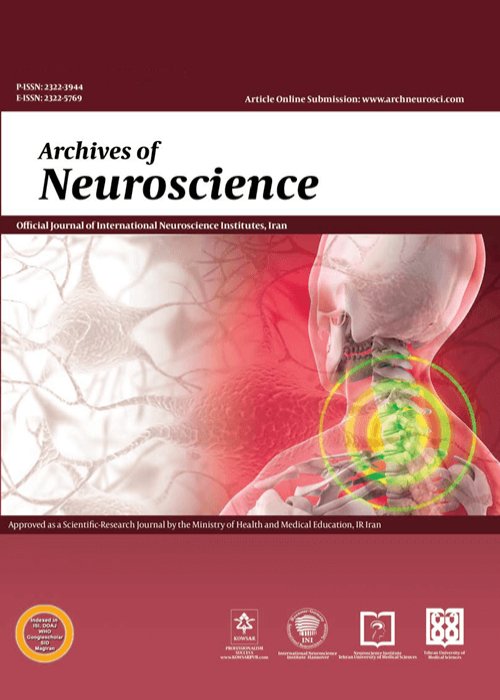Accuracy Assessment of Different Registration and Imaging Methods on Image-Guided Surgery of Lateral Skull Base
Author(s):
Article Type:
Research/Original Article (دارای رتبه معتبر)
Abstract:
Background
The use of Image Guided Surgery (IGS) systems at lateral skull base surgery is controversial due to the limitation of the accuracy of the systems. The intraoperative accuracy of the IGS is dependent on deferent parameters, mainly the precision of the system, resolution of utilized imaging, rigidity of the reference frame/adaptor, registration method, calibration of the utilized instruments, and intraoperative movement of the reference markers.
Objectives
In this study the researchers examined the target registration error of an electromagnetic IGS system on different important structures of lateral skull base through different approaches. This study compared two registration methods and two scanning systems.
Methods
In 10 formaldehyde-fixed human cadaver heads, 69 target points were marked with titanium screws for determining target registration errors. The target points were facial nerve, lateral semi-circular canal, geniculate ganglion, superior semi-circular canal, internal auditory canal, and the foramen rotundum. Seven heads were scanned using a Cone Beam CT Scanner (CBCT) and three heads were scanned using a CT scanner. Three screws were implanted around the mastoidectomy cavity as Fiducial Markers (FM). Two different registration methods were applied, including point based registration using the FM versus surface registration. All samples were dissected via the middle cranial fossa approach, retrosigmoid approach, and transmastoid approaches.
Results
The overall accuracy of the IGS-system was 1.2 mm and plusmn; 0.15 mm. Optimum accuracy was reached with CBCT-scan and the FM registration marker. Navigation using CT scans with the surface registration method, using CT scans with FM registration method, and using CBCT-scans with surface registration method had lower accuracy, respectively, yet their difference was not statistically significant (P > 0.5). The best accuracy was noted on the facial nerve in the mastoid approach (mean 0.8 mm).
Conclusions
The feasibility of the use of an electromagnetic IGS system in lateral skull base, surgery using Cone Beam CT as well as conventional CT scanner with fiducial marker registration as well as surface registration were evaluated. The accuracy was best at the lateral region of the temporal bone and decreased on further medial targets, such as lower cranial nerve and trigeminal ganglion.Keywords:
Language:
English
Published:
Archives of Neuroscience, Volume:5 Issue: 4, Oct 2018
Page:
5
magiran.com/p1891329
دانلود و مطالعه متن این مقاله با یکی از روشهای زیر امکان پذیر است:
اشتراک شخصی
با عضویت و پرداخت آنلاین حق اشتراک یکساله به مبلغ 1,390,000ريال میتوانید 70 عنوان مطلب دانلود کنید!
اشتراک سازمانی
به کتابخانه دانشگاه یا محل کار خود پیشنهاد کنید تا اشتراک سازمانی این پایگاه را برای دسترسی نامحدود همه کاربران به متن مطالب تهیه نمایند!
توجه!
- حق عضویت دریافتی صرف حمایت از نشریات عضو و نگهداری، تکمیل و توسعه مگیران میشود.
- پرداخت حق اشتراک و دانلود مقالات اجازه بازنشر آن در سایر رسانههای چاپی و دیجیتال را به کاربر نمیدهد.
In order to view content subscription is required
Personal subscription
Subscribe magiran.com for 70 € euros via PayPal and download 70 articles during a year.
Organization subscription
Please contact us to subscribe your university or library for unlimited access!


